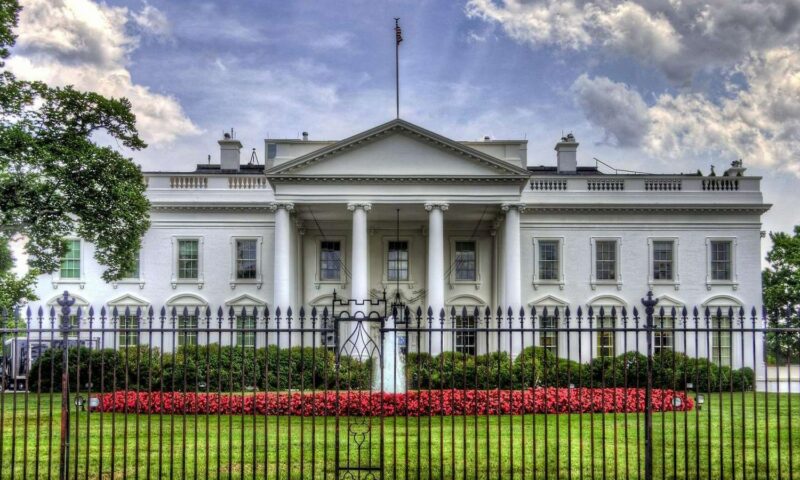By Jeff Hoyt
With Joe Biden and Donald Trump poised for an electoral rematch that would produce the oldest U.S. president in history, many believe both candidates are too elderly for the job. Attention focused on the candidates’ ages raises concerns, especially considering that nearly half of older Americans have faced age discrimination in their own professional lives.
The debate surrounding seniority in federal offices brings forth advantages, such as experience and wisdom, and disadvantages, like potential mental decline or difficulties relating to younger voters. To understand voters’ sentiments on these matters and explore possible solutions, Seniorliving.org conducted a survey of over 1,100 American adults of all ages. Here are a few key takeaways:
- 59 percent of Americans feel Trump is too old to retake office, and 69 percent agree Biden is too old for re-election.
- Respondents over 60 were less likely than younger adults to say Biden and Trump are too old for re-election. This could be partly due to their own experiences, as 47 percent of older Americans have experienced age discrimination on the job.
- The vast majority believed that the ideal presidential candidates would be in their 50s or 60s.
- 72 percent support imposing a maximum age limit on the presidency and on Congress. And 44 percent of those in favor of upper limits felt he maximum age for the president should be between 70 and 79.
- Though many expressed interest in upper age limits, 36 percent admitted those restrictions could be discriminatory, and that term limits could be fairer alternatives.
As the median ages of American legislators have consistently escalated, some have labeled the federal government a gerontocracy needing age limits or term restrictions. But would such restrictions be ageist?
With an election featuring two frontrunners born in the 1940s, Seniorliving.org asked respondents their feelings regarding the ages of Biden and Trump. On inauguration day in 2025, Trump will be 78, and Biden will be 82.
The age of the respondents appeared to affect their opinions. About 70 percent of Americans under 45 thought both candidates were too old to be elected. However, people 60 or older were least likely to feel the current officeholder and his predecessor are too old for the job of president. As many older Americans have been personally impacted by age discrimination, they may not want to judge Trump or Biden based on their ages alone.
Even Trump has been cautious about remarking on Biden’s age as a disqualifying factor. In April 2023, he told conservative commentator Tucker Carlson that plenty of people in their 80s and 90s, including U.S. Sen. Bernie Sanders, remain sharp.
However, even among the oldest respondents, Biden’s age was more concerning than Trump’s. Trump’s acceptance by older Americans may be more ideological than analytical – the Silent Generation (those born before 1946) was the only age group that overwhelmingly supported the Republican in the 2020 election.
Notably, in a time of great political divide, voters across the political spectrum agreed Trump and Biden will be too old for office in 2025.
Survey participants tended to support their party’s candidates more. Only about one-third of Republicans believed Trump was too old to be president, while three-quarters of Democrats thought so. As for Biden, most Democrats agreed he was too old to serve again. Among independents, about two-thirds felt that both candidates were too old for the office.
Seniorliving.org then asked voters about their overall views on age and the presidency to get opinions free from political biases. Specifically, what’s the ideal age for a U.S. president?
The U.S. Constitution states a president must be at least 35 years old, but there is no maximum age limit. Trump was the first president to start his term past age 70, and Biden is the first to serve in his 80s.
The average age of past presidents has been 55, much younger than Biden and Trump at the time of the next election. Historical and modern preferences align: Most people prefer presidents to take office in their 50s or 60s, and 85 percent agreed that a president should ideally be younger than 70.
More than two in three Americans would prefer the president to be in their 50s or 60s–old enough to have amassed knowledge and experience, yet considerably younger than Biden or Trump. That opinion was consistent among respondents across age groups, but varied by political party.
Most citizens are comfortable with the current constitutional minimum age for the presidency – nearly 60 percent feel it should remain at 35 years. Interestingly, nearly twice as many voters would eliminate the age minimum as would choose to raise it.
However, nearly three-quarters of Americans would amend the Constitution to add an upper age limit on presidential qualifications. Seventy-five percent of Republicans favored a maximum presidential age, compared to 69 percent of Democrats. In the U.S., few roles have specific age restrictions. The jobs that do tend to have rigorous physical demands, such as law enforcement officers or air traffic controllers.
Opinions varied regarding what the maximum age should be for president. Nearly 10 percent believe presidents shouldn’t be older than 60, while 20 percent would allow private-sector executives to serve into their 80s.
Those on the left tended to prefer a lower age limit than those on the right. Forty-two percent of Democrats would prohibit 70-year-olds from holding office. Three-quarters of Republicans would choose an upper limit of 71 or higher, with one-quarter content to set the age ceiling in the 80s. This makes sense given the demographics of each party. Republicans tend to be older adults, and many younger voters are Democrats.
What about Congress?
Age concerns for the American government aren’t limited to the executive branch. Despite a handful of young, new representatives, the current Congress is one of the oldest in history. The median age of representatives is 57 years old, while the senators’ median age is 65.
Sen. Dianne Feinstein of California, who died last October at the age of 90, and Chuck Grassley of Iowa, who’s 90, arguably typify age issues. Feinstein suffered medical problems and reported cognitive challenges undermining her ability to serve. Grassley recently won a new six-year term and has already filed for re-election in 2028, potentially putting him in office past the age of 100.
Most Americans are okay with the current minimum ages for Congress (age 25 for the House and 30 for the Senate). However, over a quarter of Americans would prefer to remove these requirements and allow even younger citizens to run for federal office.
Most Americans want to restrict older legislators, with nearly three-quarters supporting a maximum age for the House and Senate. Republicans showed slightly more support for an upper age limit than Democrats. Americans generally agreed that the upper age for Congress members should be between 70 and 79, the same as for president.
Almost half of the people polled felt senior politicians are out of touch with modern issues like technology and climate change, making them unable to represent younger generations. Notably, younger Americans were nearly three times more likely to say older legislators make government worse instead of better. Among those under 45, this ratio increased to four-to-one.
While many Americans want to limit the age of congressional members, a significant portion is hesitant to set specific age restrictions. About 48 percent believe age isn’t crucial as long as politicians can serve the public interest. Additionally, 36 percent view age restrictions as discriminatory and prefer that the ballots reflect their confidence in individual candidates’ competence.
Unlike age limits, term limits offer a fair way to promote legislative turnover without discriminating based on age. They would stop long-serving incumbents from staying in office for many decades. Currently, 16 states have term limits for statewide offices, which Americans prefer over age limits by a margin of more than four to one.
Out of the 45 presidents before Trump and Biden, all were younger than 70 when they took office. Now the nation has had consecutive presidents in their 70s, and, likely, the next one will also be in their 80s during their term.
Some believe the electoral system favors long-term politicians, resulting in overrepresentation of elderly individuals and reduced government responsiveness. Around 70 percent of Americans support setting a maximum age for federal elected officials, and many also favor term limits for congressional leaders. Currently, the 22nd Amendment places a term limit on the presidency.
Campaign finances, voter turnout, and incumbency advantage have driven the aging of Congress. But is this an issue that needs to be addressed? After all, senior leaders can stabilize the nation, preserve knowledge, and temper youthful ideas. As life expectancy increases, politicians’ ages will also rise naturally. If ineffective leadership persists, Americans always have the option to head to the ballot box to vote in leaders with fresh perspectives at any age.
Source: Seniorliving.org, an online directory of information and topics for older adults, surveyed 1,113 adults in 2023 for this report. Twenty-one were 18 to 29 years old, 27 percent were between 30 and 44, 28 percent were 45 to 60, and 24 percent were 60 or older. Thirty-five percent were Democrats, 29 percent were Republicans, 25 percent were independents, and 11 percent didn’t align with any of those three groups.

